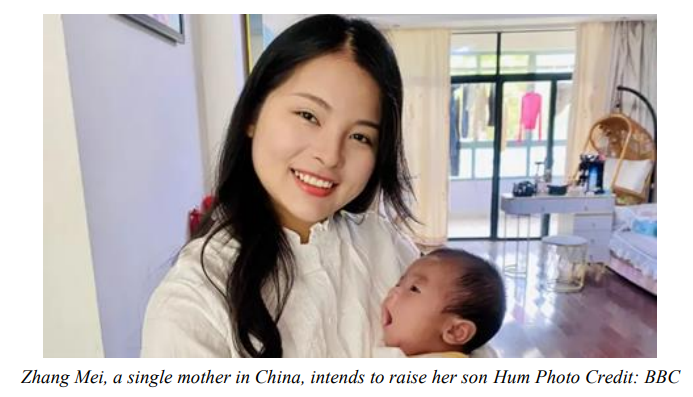By Jenny Bo
June 23, 2025
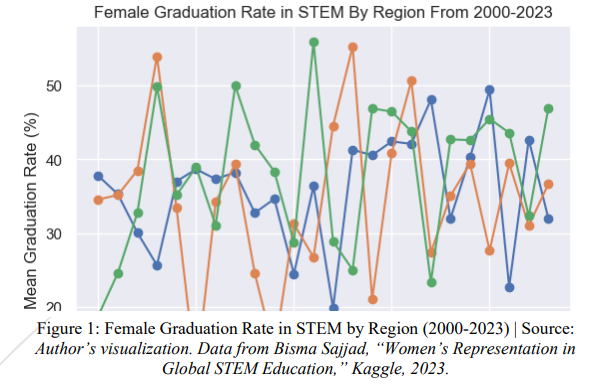
Women’s participation in STEM (Science, Technology, Engineering, Mathematics)
education significantly reflects the levels of gender equality, social stability as well as the human
potential in a nation that can boost fast development present in a nation. While the enrollment and
graduation rate of women in STEM programs has overall increased throughout time, the patterns
vary widely by region. Furthermore, an in-depth analysis of the correlations among female
graduation rate, female enrollment rate, and the gender gap index illustrates a systematic difference
among areas. Therefore, analyzing trends across Asia, Europe, and North America from 2000 to
2023 reveals crucial insights about increasing women’s access to STEM fields.
The female graduation rate in STEM education across all three continents shows distinct
differences (Figure 1). While North America has reached some of the highest graduation rates, the
fluctuation in available programs has been the most extreme in comparison to Asia and Europe.
These fluctuations could be attributed to inconsistent policies and unstable institutional support for
the higher education system, including the prohibition of gender discrimination in educational
program funding, defunding STEM scholarship programs, and other additional roadblocks.
However, the high graduation rate also reflects well for the well-funded institutions and programs
as well as the social normalization of women in STEM fields, resulting in the gradual increase in
resources and opportunities for women. In contrast, Asia demonstrates a rather stable and
continuous growth after 2012, indicating sustained investment and improvement in STEM
education, including the development of new infrastructure and the cultivation of superior teacher
resources. Europe, in contrast, suggests significant fluctuations with a declining trend in female
graduation rate, which points to a disruption in educational policy as well as the quality of the
school system.
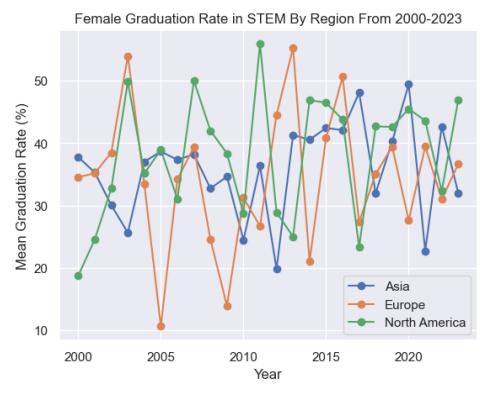
Figure 2: Gender Equality in STEM by Region (2000-2023) | Source: Author’s visualization. Data from Bisma Sajjad, “Women’s Representation in Global STEM Education,” Kaggle, 2023.
The disparity between women’s access to STEM education and various outcomes continues
to be a primary issue. Although numerous countries have given access for more women to enroll in
STEM programs, fewer have made it through graduation or career placement. Without inclusion,
proper guidance, and strict anti-harassment policies, many women withdraw prior to completing
their degrees in North America and Asia. Additional cultural stereotypes that perceive women as
less capable in fields that require intensive mathematics, has raised the barrier for women interested
in STEM creating a difficult environment for them to enter male-dominated fields. This is evident
in the correlation heatmaps where there’s no positive relationship between the female STEM
enrollment and graduation rate (Figure 3 and Figure 5). Additionally, the lack of female roles in
faculty members results in a scarcity of female mentors and less support for structural gender
reforms. Compared to Europe and North America, Asia demonstrates a negative relationship
between the gender gap index as well as female enrollment and graduation rate, which reflects that
gender equality is a crucial index for measuring women’s experience and success in entering STEM
fields (Figure 3). While Europe and North America have a positive correlation between gender gap
index and female graduation rate, which suggests better support and inclusion, the negative
relationship with enrollment still indicates a deeper structural challenge to welcome women into the
STEM fields (Figure 4).
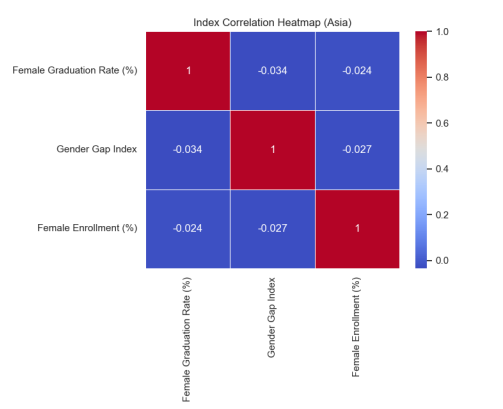
Figure 3: Index Correlation Heatmap (Asia) | Source: Author’s visualization. Data from Bisma Sajjad, “Women’s Representation in Global STEM Education,” Kaggle, 2023.
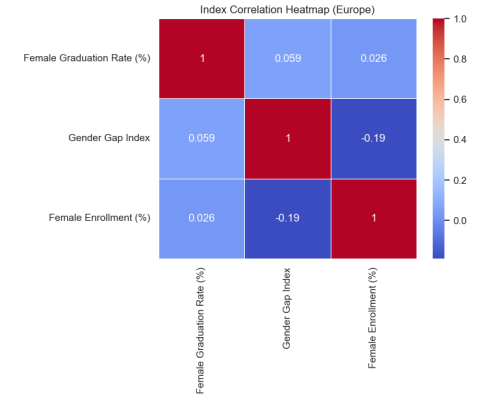
Figure 4: Index Correlation Heatmap (Europe) | Source: Author’s visualization. Data from Bisma Sajjad, “Women’s Representation in Global STEM Education,” Kaggle, 2023.
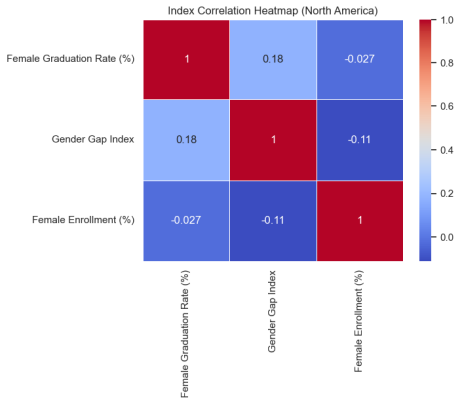
Figure 5: Index Correlation Heatmap (North America) | Source: Author’s visualization. Data from Bisma Sajjad, “Women’s Representation in Global STEM Education,” Kaggle, 2023.
In conclusion, despite the notable increase in women’s involvement in STEM education,
regional variations underscore the challenge of achieving true gender equality. North America’s
high but fluctuating female graduation rate reflects strong institutional support but inconsistent
policy implementation. Asia’s steady growth suggests prolonged investment in STEM
infrastructure, yet it struggles with deep-rooted gender norms and stereotypes, while Europe
exhibits unstable national implementations that hinder consistent progress. It is evident that access
to STEM education alone does not ensure graduation and representation outcomes; they also
depend heavily on the institutional support, inclusive policies, reformed gender norms, and strong
female representations. Moreover, closing the gender gap demands heavy social reform, cultural
change, and political commitment that eliminate gender stereotypes to foster an environment that
help women thrive in STEM fields
